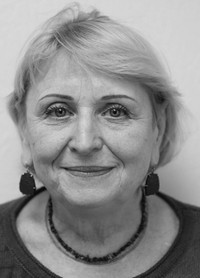PHYSICAL FITNESS AND MORPHOFUNCTIONAL STATUS OF BOYS AGED 6-8 YEARS
Keywords:
physical fitness, physical development, boys, 6-8 years old.Abstract
Objective of the study was to identify the relationship between the morphofunctional status and physical fitness in modern boys aged 6-8 years.
Methods and structure of the study. The work used standardized methods for assessing physical development and physical fitness. Morphofunctional status was determined using the methods of anthropometry, caliperometry, spirometry, pulsometry and tonometry [1,4]. Physical fitness was assessed based on the results of test tasks, used in the field of physical education and VFSK "GTO": 30 m run; shuttle run, 3 × 10 m (s); 6-minute run (m); standing long jump with two legs (cm); standing forward bend (flexibility, cm); carpal dynamometry, flexion and extension of the arms in an emphasis lying on the floor, lifting the torso into a sitting position from a supine position in 1 min [2,3].
Results and conclusions. Based on a comparative analysis of the level and pace of morphofunctional development and preparedness, it was revealed that the indicators of morphofunctional status and physical fitness differ significantly among boys aged 6 and 7, 7 and 8; the greatest increase in physical fitness with the priority of speed-strength qualities and endurance is typical for the period from 6 to 7 years, with a decrease in rates in the period from 7 to 8 years on average twice against the background of relatively uniform and lower rates of annual changes in morphological and functional indicators. The results obtained indicate that the standards of physical fitness for boys of age groups of 6, 7 and 8 years old, characterized by normal physical development, should be developed for each age group, taking into account the greatest coverage of territorial variability.
References
Abramova T.F., Nikitina T.M., Kochetkov N.I. Labilnyye komponenty massy tela – kriterii obshchey fizicheskoy podgotovlennosti i kontrolya tekushchey i dolgovremennoy adaptatsii k trenirovochnym nagruzkam [Labile components of body mass - criteria for general physical fitness and control of current and long-term adaptation to training loads]. Guidelines. Moscow: Skayprint publ., 2013. 132 p.
Metodicheskiye rekomendatsii po provedeniyu monitoringa fizicheskoy podgo-tovlennosti obuchayushchikhsya v sfere obrazovaniya Rossiyskoy Federatsii FGBU «Federalnyy tsentr organizatsionno-metodicheskogo obespecheniya fizichesko-go vospitaniya» [Guidelines for monitoring the physical fitness of students in the field of education of the Russian Federation Federal State Budgetary Institution "Federal Center for Organizational and Methodological Support of Physical Education"] [Electronic resource]. Available at: http://fcomofv.ru/page351/page544/ (date of access: 03.02.2022).
Normativy GTO Vserossiyskogo fizkulturno-sportivnogo kompleksa «Gotov k trudu i oborone» (GTO) [Standards of the GTO of the All-Russian physical culture and sports complex "Ready for work and defense" (GTO)] [Electronic resource]. Available at: https://www.gto.ru/norms (date of access: 01.20.2022).
Serdyukovskaya G.N.[ed.] Organizatsiya meditsinskogo kontrolya za razvitiyem i zdorovyem doshkolnikov i shkolnikov na osnove massovykh skrining-testov i ikh ozdorovleniye v usloviyakh detskogo sada, shkoly [Organization of medical control over the development and health of preschoolers and schoolchildren based on mass screening tests and their health improvement in a kindergarten, school]. Moscow, 1995. 142 p.
Peterkova V.A., Nagaeva E.V., Shiryaev T.Yu. Otsenka fizicheskogo razvitiya detey i podrostkov [Assessment of the physical development of children and adolescents]. Guidelines. Moscow: FGBU "NMITs Endocrinology" of the Ministry of Health of Russia; Alfa-Endo publ., 2017. 94 p.
Strategiya razvitiya fizicheskoy kultury i sporta v Rossiyskoy Federatsii na period do 2030 goda [Strategy for the development of physical culture and sports in the Russian Federation for the period up to 2030]. Order of the Government of the Russian Federation dated November 24, 2020 No. 3081-r. Available at: http://static.government.ru/media/files/ (date of access: 02.02.2022).
Baranov A.A., Scheplyagina L.A.[ed.] Fiziologiya rosta i razvitiya detey i podrostkov (teoreticheskiye i klinicheskiye voprosy) [Physiology of growth and development of children and adolescents (theoretical and clinical issues)]. Practical guide. Moscow: GEOTAR-Media publ., 2006. 432 p.


